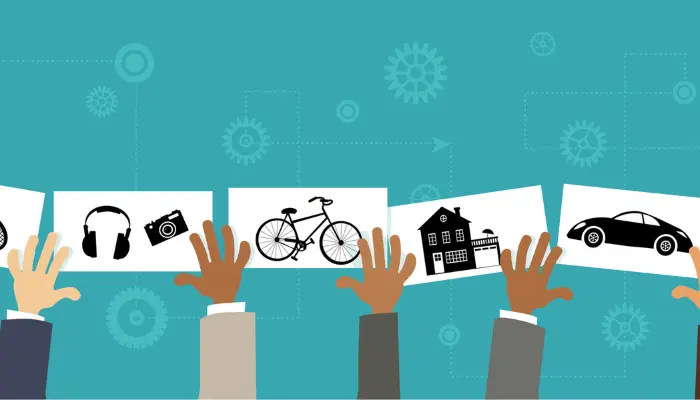Collaborative Economy: Beginner’s Guide
Ever notice how you don’t need to own everything anymore? You can rent a car, share a house, sell food from your kitchen, or catch a ride — all with your phone.
Advertisement
That’s the collaborative economy. It’s about sharing what we have, spending less, and earning in new ways.
Advertisement
This guide covers how it works, why it’s growing, what to watch out for, and how you can take advantage of it.
What Is the Collaborative Economy?
The collaborative economy (also called the sharing economy) is a model where people share resources, products, or services instead of buying or owning everything by themselves.
Advertisement
Instead of owning something, you just get access to it. The idea is to use what already exists in smarter ways, save money, and connect directly with others who have what you need.
Let’s say you have a car that just sits there most of the time — you could offer rides and make money. Or maybe you have a spare room you can rent on Airbnb.
That’s the collaborative economy in action: people helping people, using apps and platforms to make the connection.
And the key point: it’s all between regular people. No giant company in the middle owning everything. The platform just connects the dots.
How Does the Collaborative Economy Work in Real Life?

So how does this play out in real life? Simple: online. Most of these exchanges happen through apps or websites that link two people — one offering something and one needing it.
Here are the most common formats:
- Sharing goods: Renting or lending stuff like a car, power tools, or even clothes.
- Service exchange: Doing things for others (dog walking, furniture assembly, ridesharing) and getting paid.
- Space sharing: Renting out part of your home, a garage spot, or an office.
- On-demand work: Doing quick gigs or side jobs without a long-term commitment.
The platforms don’t own the stuff or the service — they’re just the middleman making the connection happen.
Popular Examples of the Collaborative Economy
So what does the collaborative economy actually look like in real life? Chances are, you’ve already been part of it — maybe without even realizing.
From catching a ride to booking a place to stay, people are skipping the big companies and going straight to each other. Let’s check out some of the most popular ways folks are making it work.
- Transportation: Uber, Lyft, BlaBlaCar
- Housing: Airbnb, Vrbo, Couchsurfing
- Quick tasks: TaskRabbit, Handy, Thumbtack — for repairs, painting, delivery, you name it
- Coworking spaces: WeWork and similar places where people share workspaces
- Food: Apps like Shef that connect home cooks with hungry neighbors
- Peer-to-peer lending platforms: Like LendingClub and Prosper
- Car sharing: Turo lets you rent someone else’s car nearby
What do these all have in common? It’s not a company providing the service — it’s regular folks, using a platform to connect.
Advantages of the Collaborative Economy
There’s a reason the collaborative economy keeps growing — actually, there are several.
Whether you’re trying to cut costs, bring in some extra income, or just get more out of what you already have, this model can be a game-changer.
Let’s break down the biggest benefits and why so many people are jumping on board.
- Lower costs: You pay only for what you use, instead of buying everything.
- Extra income: You can make money with stuff you already own or know how to do.
- It’s eco-friendly: Sharing means less waste and overconsumption.
- More access for more people: People who couldn’t afford something can now use it more cheaply.
- It builds trust: Ratings and reviews help people feel safe doing business with each other.
If you’re living on a budget or just want to be smarter with your money, this can really help.
Downsides and Challenges of the Collaborative Economy
Now, let’s be real — the collaborative economy isn’t perfect. Just like any big shift, it comes with a few bumps in the road. And if you’re thinking about getting involved, it’s smart to understand what you might be dealing with:
- No job security: Most gig workers don’t get benefits like health insurance, paid time off, or even a stable income. You’re basically on your own.
- Scams and trust issues: Not everyone on these platforms plays fair. Fake profiles, bad service, or even payment problems can happen.
- Low pay on some platforms: You might work a lot and still make very little — especially when the platform takes a big cut.
- Tough competition with traditional businesses: Local shops and services that follow labor laws often struggle to keep up with cheaper, less regulated alternatives.
So yeah, it’s a flexible and fast-growing model — but there’s still a long way to go to make it truly fair and secure for everyone involved.
How the Collaborative Economy Impacts Jobs
The way we work is changing, and the collaborative economy is a big part of that. Full-time jobs aren’t the only option anymore. A lot of people are earning money through side gigs and on-demand work — also known as the “gig economy.”
Here’s how it’s changing things:
- More freedom: You decide when and how much to work.
- Extra income: You can combine it with your main job or studies.
- More chances: Even without a degree or experience, you can still earn.
- Less security: No contracts, no job guarantees, no long-term benefits.
It’s a great setup for some, but not ideal for everyone. It all depends on your goals and what you need.
Collaborative Economy and Sustainability
One of the biggest upsides is how much this model helps the environment. When people share instead of buy new, that means less stuff being produced and thrown away.
Here’s why it’s a greener way to live:
- Less waste: Sharing means fewer things in the trash.
- Better use of resources: A shared car used by five people is better than five cars sitting in driveways.
- It encourages mindful habits: You buy only what you need and waste less.
If you care about sustainability, the collaborative economy is totally in line with that mindset.
What’s the Future of the Collaborative Economy?
The collaborative economy is here to stay — and it’s only getting bigger. It’s already touching transportation, housing, food, and work, but it’s heading into even more areas.
Here’s what we might see next:
- Expansion into healthcare, education, and energy: Think online health consults, group learning, or shared solar energy.
- Decentralized platforms: Blockchain tech might allow people to share directly, without big companies.
- More regulation: Governments are starting to make rules to protect users and workers.
- Stronger local networks: Communities building small sharing circles in neighborhoods.
The goal is a smarter, fairer economy — one that gives more people access and reduces waste along the way.
Is the Collaborative Economy Safe?
Good question — and the answer is: it depends. Some platforms do a great job with things like customer support, insurance, and clear rules.
Others? Not so much. Just like with anything online, there are solid options out there and a few that you should probably avoid.
If you want to stay out of trouble, it’s all about being careful and doing a little homework before jumping in. Here’s what you should keep an eye on:
- Always read reviews
- Check refund and safety policies
- Use platforms with customer support
- Watch out for scams and fake offers
In general, yes — it’s safe. Just don’t be careless. Do your homework before booking or offering anything.
How to Get Started in the Collaborative Economy (Step-by-Step)
Ready to give the collaborative economy a shot? Whether your goal is to make some extra cash or cut back on everyday expenses, getting started doesn’t have to be complicated.
Here’s a step-by-step guide to help you dive in without getting overwhelmed:
- Figure out what you can offer
Got a spare room? A car that sits in the driveway most of the week? Free time on the weekends? Even basic skills like cleaning, cooking, or assembling furniture can turn into income. - Choose a reliable platform
Stick with apps or websites that have a good reputation. Look at user reviews, check how long they’ve been around, and see if they offer support in case something goes wrong. - Set up a clear and honest profile
Use real photos, write a solid description, and be upfront about what you’re offering. A good profile builds trust fast and helps you stand out. - Understand how it works
Every platform has its own rules, fees, and policies. Take a few minutes to read the basics so you don’t get surprised later. - Use and give reviews
Ratings matter. Ask satisfied users to leave feedback, and do the same for others. It helps build your reputation and keeps the whole system working better for everyone. - Start small and test the waters
Try one thing at a time. Offer a single service or rent out one item just to see how it goes. Once you get the hang of it, you can scale up if you want.
You don’t need a business plan or tons of experience. Just start where you are, with what you’ve got — and see where it takes you.
The collaborative economy isn’t just a trend — it’s already part of everyday life. From food delivery to ride-sharing, it’s changing how we live.
It comes with pros, a few risks, and lots of potential. Now that you get the basics, it’s your turn to try it out. Sharing just makes sense.





